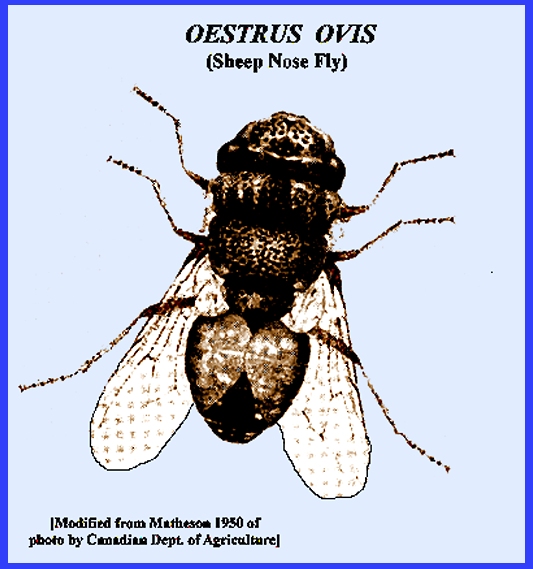File: <Oestridaaekey.htm> <Medical
Index> <General Index> Site Description Glossary <Navigate to Home>
|
Insecta: Diptera OESTRIDAE Complex
KEY (Contact) Please CLICK on underlined links
to view images or to navigate within the key: Also See <Oestridae Details> This small complex of flies
consists of the families Cuterebridae, Oestridae and Hypodermatidae. The
first stage larvae of some species are parasitic in the nasal passages of
animals and occasionally humans. The
Cuterebridae have warble producing larvae, the Hypodermatidae are warble
flies.
- - - - - - - - - - - - - - - - - - - - Key
References: <medvet.ref.htm> <Hexapoda> Matheson, R. 1950. Medical Entomology. Comstock Publ. Co, Inc. 610 p. Service, M. 2008.
Medical Entomology For Students.
Cambridge Univ. Press. 289 p Legner, E. F. 1995. Biological control of Diptera of medical
and veterinary importance. J. Vector
Ecology 20(1): 59-120. Legner, E. F. 2000.
Biological control of aquatic Diptera. p. 847-870.
Contributions to a Manual of Palaearctic Diptera, Vol. 1, Science Herald, Budapest. 978 p. |
